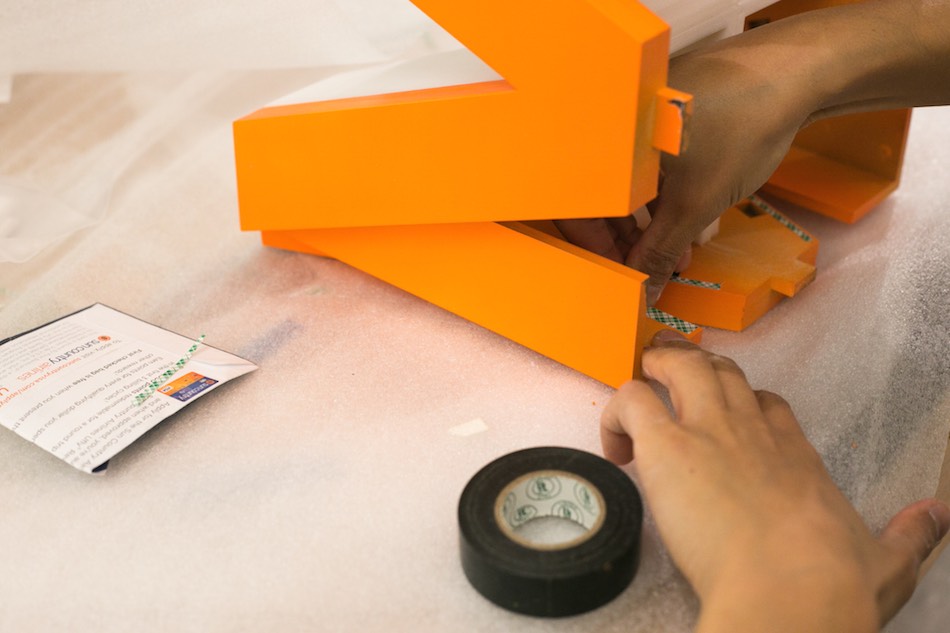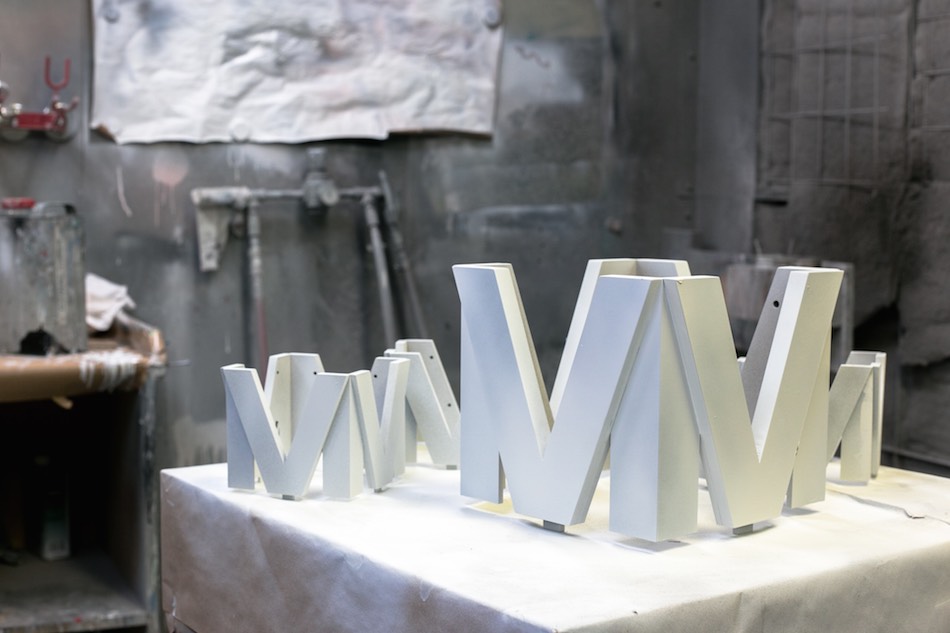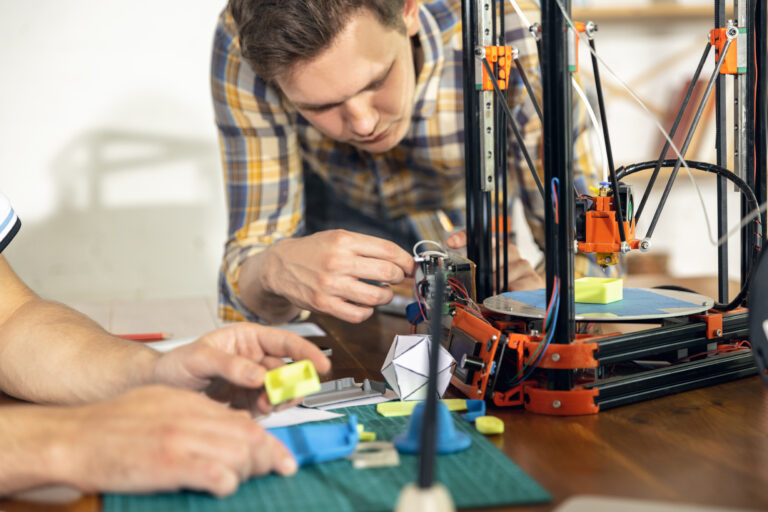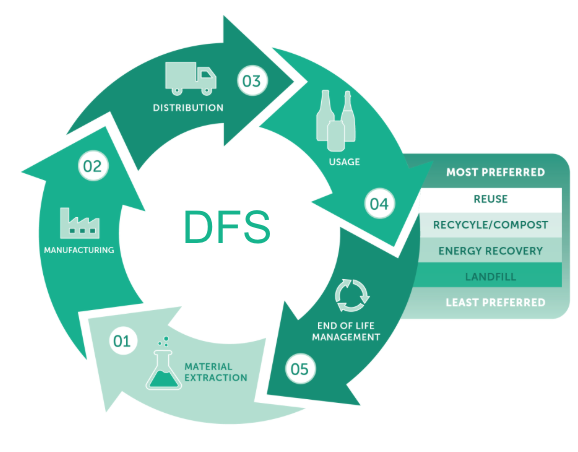Time to read: 5 min
This week we’re spotlighting the development of a product we created for Menlo Ventures with industrial designer Mark Kelley. We took the opportunity to ask Mark a few questions about the industrial design process and how his skills fit into this collaborative project with Fictiv co-founder and engineer Dave Evans.
Mark, can you describe where your design skills fit into the life cycle development of a product?
Mark: Each product is a little different in that some clients come with a rough prototype, some have a few quick sketches, and some have only a vague concept or arduino-based program set up. I really like to come in as early as possible though so I can work with the engineers to develop a whole design process from concept to manufacturing. The earlier a dialogue can start between all the players, including the manufacturers, the marketing team and the design team, the better.
What does your design process look like?
Mark: For any new job I’ll have a sort of small pinterest board to identify, for example, a couple key material combinations, edge details, or perhaps where two materials interface. It’s all about form inspiration in the beginning. And I always start with the most basic form of what that product could be. For example, if it’s a very squarish thing, then I’m going to start with just a square. And then I’ll develop an alternative on that square and another alternative until I see the form begin to develop itself. This process helps me work through any block I have. I start simple and then with minor tweaks the solution eventually reveals itself.
“A little bit of surprise is a good goal for every project.”

What tools do you use to aid the design process?
Mark: I start pretty much everything on pen and paper. Then I take that sketch and turn it into either a CAD model or a low-fidelity prototype with cardboard or foam. The next step is usually a stage of rapid prototyping with 3D prints and then a process of refining those prototypes into a manufacturable product.
What does the interplay between the creative, or form, and the analytical, or function, look like in your process?
Mark: It’s immensely important that these two elements are very much separate but also entirely related. Each element involves different considerations that should rely upon one another. Because everything I do is for people so I need to think not just about how the product looks but also about how people interface with the object — how they touch it and view it and how the environment affects their perspective and experience.

So how did you work with Fictiv to come up with the idea for the Menlo Ventures product?
Mark: This was a really fun project because it’s a great logo to work with. So my first thoughts were all around how I could manipulate the form of the logo into something that had a bit of magic in it. For every job I have an initial mental concept and for this one I had this image of some sort of glowing orb. A centerpiece that would be interesting to talk about. With everything I do I want there to be something indescribable about the product; a touch of magic in the experience. A little bit of surprise is a good goal for every project.
Dave: Mark did such a great job arriving at the initial concept for the product. All we gave him was a 2D logo and then he came up with this idea for a table centerpiece that used the logo and had this magical glow to it. Our company saying is “Fictiv, created by imagination” and I’m continually inspired by people like Mark who can create something amazing out of nothing.
“I start simple and then with minor tweaks the solution eventually reveals itself.”
What did the process look like to go from a conceptual rendering to a manufacturable product?
Dave: Once we had this great rendering we had to then ask ourselves, “okay now how do we actually make this thing?” And it’s not only how do we make it, but also how do we make it in a cost-effective fashion as a piece that’s not a one-off but also not a product that’s going to be manufactured on a large-scale with a big infrastructure in place.
Mark: Initially we started building it up digitally and then including more practical considerations. Under the considerations of cost and a small-scale manufacturing system, Dave and I decided that laser cutting the majority of the body would be a great cost-effective way to approach it. So I started separating the M logo into multiple faces that were laser-cuttable to create the outside frame. For all the smaller details, thank god for 3D printing. It’s so quick and cost effective and the outcome was great.

Can you expound upon the challenge of creating a small-scale, but not one-off product?
Mark: Repeatability was certainly a big issue. It’s very much a hand-crafted, sculptural piece, but it is still a manufactured piece.
Dave: We ended up doing 16 of these which made it even more challenging because with one piece you can make it non-scalable and just hack the thing together. But by making 16 of them we had to essentially make a mini-manufacturing line that could be repeatable so all 16 pieces look the same. We had to hand build these things in a very systematic way which was why laser cutting the frame and 3D printing the smaller internal parts made sense.
“For all the smaller details, thank goodness for 3D printing.”

So what did the manufacturing process look like in the end?
Dave: We made 2D laser cut panels which we welded together. We then made a frame which is the M and painted that in the orange color Menlo Ventures wanted. We used a silver-based paint to keep the light from shining through the inside so the light is nicely reflected. We then printed all the inside white pieces in PLA, which is a great inexpensive material, and then assembled the whole thing using locator pins and adhesive with custom-made electronics.
With a smaller, short-term project like this was timing a challenge?
Dave: We gave ourselves 2 months for this, which most people would say is way too long. But by the end of it we were just finishing up in the last week. I don’t think we ever really let up on it — it was full speed the whole time.
Mark: Anytime you have to make something by hand it takes longer than you except. Dave and I had a really good sense that it would take a while and it did. But that time can slip away very quickly so we both tried to keep each other on a pretty tight schedule to keep everything on track.
Dave: Mark and I call each other the dream team — we really bounce off each other. I’ll forget to do something and he’ll nudge me saying, “hey, have you ordered the LEDs?” and then I’ll be like, “Mark, what about these overhangs here?” It was a lot of great back and forth.
Mark: (laughing) … and a lot of intimacy. But a very fun project and I think we came up with a great product in the end.










